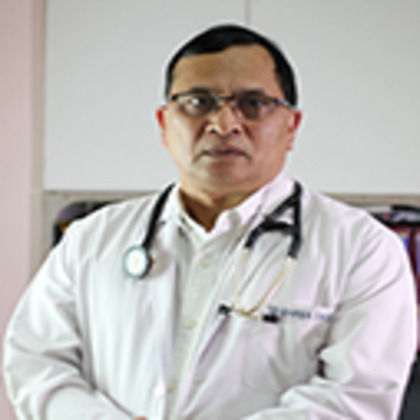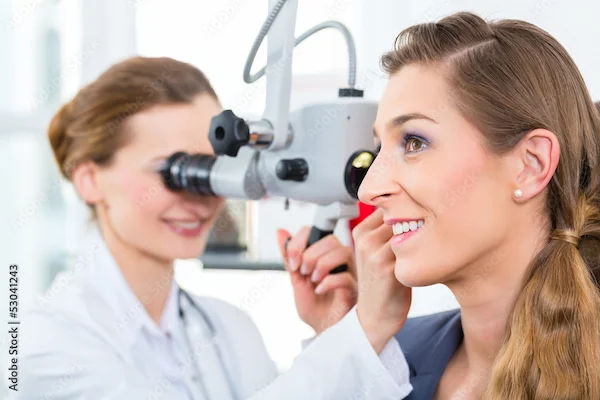Guide to Cardiac Surgery Ctvs
Comprehensive guide to cardiac surgery (CTVS) in India. Learn about types of procedures, recovery, risks, valve and bypass options, minimally invasive approaches, and expert tips.


Introduction
If you or a loved one has been told you may need heart surgery, it is normal to have questions. What does "CTVS" mean? Which operation is right for me? How long will recovery take?
This guide to cardiac surgery (CTVS) is written for people like you. It is clear, practical, and based on the best sources. We reviewed top-ranking patient pages from leading centres and organisations (Cleveland Clinic, Mayo Clinic, NHS, the Society of Thoracic Surgeons, Johns Hopkins, and NHLBI) to highlight what matters most: when surgery is needed, types of procedures, safety, recovery, and how to choose a surgeon.
By the end, you will understand the full pathway from preparing at home to returning to daily life, with examples, outcome data, and tips that go beyond typical FAQs. We cover open-heart procedures, minimally invasive and transcatheter options like TAVR, how teams reduce risks, and what enhanced recovery means for you. We also include a checklist of questions to ask your CTVS surgeon and explain where telehealth (for example, Apollo 24|7) fits into your care, including home lab collections when needed.
Understanding Cardiac Surgery (CTVS)
Cardiac surgery involves specialised procedures to treat diseases of the heart and major blood vessels. This section
explains what CTVS entails, who performs these operations, and why the heart team approach matters.
What does CTVS mean?
CTVS stands for Cardiothoracic and Vascular Surgery. It is an integrated specialty that treats diseases of the heart,
lungs and chest, and blood vessels. In practice, most cardiac surgery for adults focuses on the heart and major vessels:
coronary arteries, heart valves, the aorta, and rhythm-related procedures.
Cardiac vs Cardiothoracic vs Vascular: What Is the Difference?
While these terms are often used interchangeably, they refer to distinct areas of surgery. Understanding the differences
helps you know which specialist manages your condition.
- Cardiac surgery: Operations on the heart and great vessels, such as coronary artery bypass grafting (CABG), valve
repair or replacement, and aortic aneurysm repair. - Thoracic surgery: Procedures on the lungs and chest, for example lung cancer surgery.
- Vascular surgery: Procedures on arteries and veins outside the chest, such as carotid endarterectomy. Many centres
bundle these under CTVS to streamline care.
The Heart Team Model
Modern cardiac care uses a heart team, including cardiologists, CTVS surgeons, anaesthesiologists, imaging specialists,
nurses, and rehabilitation experts. Decisions such as bypass surgery versus stent placement are made together, guided by
guidelines and your individual risk profile.
Think of CTVS as a spectrum of options rather than a single operation. The right choice blends your goals, anatomy,
and risk, and is best decided with a heart team.
Consult Top Cardiothoracic & Vascular Surgeons
Who Needs Cardiac Surgery and When?
Not every heart problem requires surgery. This section outlines the conditions and scenarios where surgical intervention may provide the best outcomes.
Conditions That May Need Surgery
From blocked arteries to faulty valves or rhythm disorders, various heart and vessel conditions can benefit from surgical
treatment. Here we highlight the most common indications.
- Coronary artery disease: Severe narrowing of multiple arteries, especially left main or triple-vessel disease, often requires
CABG and can improve survival. - Valve disease: Severe aortic stenosis or mitral regurgitation may require repair or replacement. Options include open
surgery or less invasive transcatheter procedures such as TAVR or TEER (MitraClip). - Aortic aneurysm or dissection: Enlarged or torn aorta needs repair to prevent rupture.
- Congenital heart disease: Some adults need repair of defects present from birth, such as ASD or VSD.
- Arrhythmias: Procedures such as the Maze operation or left atrial appendage clip can treat atrial fibrillation.
Surgery vs Stents vs Medicines
Guidelines suggest that for complex coronary disease, bypass surgery generally offers better long-term outcomes than
PCI (stents). For isolated lesions, stents may be preferred. For severe aortic stenosis, TAVR can be comparable to
surgical valve replacement (SAVR) in low-risk patients. Age, valve anatomy, and other conditions influence the best
choice.
It is not only the severity but also the stability of the condition that matters. Stable severe valve disease might allow
planned timing, whereas unstable symptoms point to earlier intervention.
Major Types of Cardiac Surgery
Cardiac surgery is not a single procedure. This section introduces the main types of operations, including bypass, valve,
aortic, arrhythmia, and congenital heart surgeries.
Coronary Artery Bypass Grafting (CABG)
CABG reroutes blood around blocked coronary arteries using grafts from the chest or leg. On-pump CABG uses a
heart-lung machine; off-pump (beating heart) CABG avoids it. Both are effective, and the choice depends on your
arteries and overall health. Off-pump may reduce certain complications in select patients, though evidence is mixed.
Valve Repair and Replacement
Heart valves may be repaired or replaced depending on severity and type of disease.
- Aortic valve: Replacement can be mechanical, requiring lifelong anticoagulation, or bioprosthetic, usually avoiding
lifelong anticoagulation. TAVR is widely used for older or higher-risk adults and increasingly for low-risk patients. - Mitral valve: Repair is preferred when feasible to preserve heart function. TEER (MitraClip) helps high-risk patients
with severe regurgitation.
Aortic Surgery
Ascending aortic aneurysms and dissections are repaired with grafts. Timing depends on size, growth, and cause, such
as bicuspid valve or Marfan syndrome.
Arrhythmia Surgery
The Maze procedure blocks abnormal electrical circuits in atrial fibrillation and is often combined with other cardiac
surgeries. Left atrial appendage closure can reduce stroke risk.
Congenital Heart Surgery (Adults)
Repairs like ASD closure may be surgical or catheter-based depending on the defect type and size.
Many centres now offer combined procedures, for example CABG with valve repair and Maze, reducing multiple
anaesthesia exposures and hospital stays.
Minimally Invasive and Transcatheter Procedures
Advances in technology allow some procedures to be performed through smaller incisions or catheters, reducing
recovery time while maintaining effectiveness.
Minimally Invasive and Robotic Approaches
Small incisions, such as mini-thoracotomy or partial sternotomy, allow valve repairs or replacements and some
bypasses. Benefits may include less pain, shorter hospital stay, and faster recovery. Robotic-assisted surgery can improve
visualisation and precision for selected mitral repairs.
Transcatheter Therapies
Transcatheter procedures, such as TAVR and MitraClip, offer alternatives to open surgery for selected patients.
- TAVR: A new valve is delivered via a catheter, often through the femoral artery. TAVR is comparable to surgery for
many low-risk patients with faster early recovery. - TEER (MitraClip): Reduces mitral regurgitation in high-risk patients.
- Other options: TMVR, tricuspid interventions, and left atrial appendage occlusion devices.
Decisions about TAVR vs SAVR or TEER vs surgical repair are made by the heart team using imaging, frailty
assessment, and patient goals. Hybrid operating rooms enable collaboration between surgeons and interventionalists.
Preparing for Your Operation
Proper preparation can improve outcomes and reduce complications.
Pre-Op Tests and Optimisation
Tests include echocardiogram, coronary angiography or CT angiography, chest X-ray, blood tests, and sometimes lung
function tests. Optimising diabetes, blood pressure, anaemia, and nutrition reduces complications. Home collection
services for tests like HbA1c and lipid profile are available.
Medications and Lifestyle
Adjustments may be needed for blood thinners, diabetes medicines, and supplements. Stop smoking ideally 4–6 weeks
before surgery. Walking and breathing exercises prepare your lungs. Bring a list of medications and allergies.
Choosing Your Surgeon and Hospital
Choose centres with transparent outcomes and enhanced recovery programmes. Ask about STS star ratings, surgical
volumes, and specific results. Cardiac rehabilitation availability is important.
Prehabilitation with light exercise, nutrition, and stress reduction before surgery can shorten hospital stays and speed
recovery.
The Day of Surgery and ICU
From entering the operating theatre to the first hours in intensive care, knowing what to expect can reduce anxiety and
help you follow post-operative instructions safely.
In The Operating Room
You will have general anaesthesia, monitoring lines, and possibly a heart-lung machine. Typical duration is 3–6 hours
for isolated CABG or valve surgery, longer for combined procedures.
ICU and Early Recovery
Expect a breathing tube, chest drains, and IV lines. Nurses and physiotherapists help you sit up and walk early, key
parts of ERAS protocols. Most patients transfer from ICU to the ward within 24–48 hours.
Pain Control and Devices
Pain is managed with medications. Temporary pacing wires and urinary catheters are common and usually removed
within days. Regional anaesthesia options can reduce opiate use.
Early mobilisation reduces pneumonia and blood clots.
Risks, Results, and Safety Strategies
Every surgery carries risks. This section discusses common complications, personalised risk assessment, and strategies to
improve safety and recovery.
Common Risks
CABG operative mortality is around 2–3%, lower in elective low-risk patients. Stroke occurs in 1–2%, new atrial
fibrillation in 20–40%, with other complications less common. Valve and aortic procedures have different risk profiles.
Personalised Risk Tools
Tools like the STS Risk Calculator and EuroSCORE II estimate risk and guide decisions. Ask your team to review your
personalised numbers.
Enhanced Recovery After Surgery (ERAS)
ERAS protocols include pre-op carbohydrate loading, minimal fasting, early extubation, multimodal pain relief, early
mobilisation, and feeding. Infection prevention includes chlorhexidine baths, glucose control, and timely antibiotics.
Modifiable factors like smoking, glucose, nutrition, and activity can meaningfully shift risk.
Recovery, Rehabilitation, and Long-Term Care
Recovery extends beyond the hospital. This section explains what to expect during the early weeks, sternal precautions,
and how long-term care supports your heart health.
Hospital Timeline and Sternal Precautions
Hospital stay after uncomplicated CABG or valve surgery is 5–7 days, shorter with minimally invasive approaches.
Sternal precautions include avoiding heavy lifting for 6–8 weeks. Most people resume daily activities in 4–6 weeks; full
recovery takes 8–12 weeks.
Cardiac Rehabilitation Phases
Cardiac rehab is structured in phases, from hospital-based mobilisation to supervised outpatient exercise and long-term
maintenance.
- Phase I (inpatient): Gentle mobilisation and breathing exercises.
- Phase II (outpatient, 6–12 weeks): Supervised exercise, diet and medication education.
- Phase III (maintenance): Independent lifestyle programme. Cardiac rehab reduces readmissions and may lower
mortality.
Long-Term Medications and Lifestyle
Post-surgery medications include antiplatelets, statins, beta-blockers, ACE inhibitors, and possibly anticoagulants.
Heart-healthy eating, regular activity, and sleep are important. Mood changes or anxiety are common and treatable.
Seek care for fever, wound changes, weight gain, breathlessness, or palpitations. Telehealth services can assist with
follow-up and lab monitoring.
Costs, Insurance, and Access
Cardiac surgery costs vary widely. Understanding what drives expenses, how insurance can help, and tips for planning
treatment access can reduce stress and improve outcomes.
What Drives Costs?
Costs vary by procedure type, device choice, hospital, ICU needs, and length of stay. Insurance authorisation usually
requires pre-op reports, risk assessment, and planned implants.
Maximising Value
Choose experienced centres with transparent outcomes. Ask for a consolidated estimate. Virtual second opinions can
confirm plans without travel.
Travel Planning
For minimally invasive cardiac surgery in India, allow buffer days, arrange local support, and confirm follow-up near
home.
When to Seek Help and Follow-Up Care?
Even after discharge, monitoring your heart health is vital.
Red Flags After Discharge
Certain symptoms may indicate complications. Here we list the signs that require urgent evaluation or immediate
medical care.
- Fever above 38°C, wound pain, redness, or drainage
- Sudden breathlessness, chest pain at rest, fainting
- Rapid weight gain, swelling, or decreased urine
- Palpitations with lightheadedness
Routine Follow-Up
Surgical review at 1–2 weeks, cardiology at 4–6 weeks, then at 3–6 months and annually. Echocardiograms, INR, and
labs may be needed. Home collection services simplify care.
Symptom diaries can help detect issues early.
Myths vs Facts
Misinformation about heart surgery is common. This section separates myths from evidence-based truths to help you
make informed decisions.
- Myth: Open heart surgery means months in bed.
- Fact: Most patients walk the day after surgery and go home within a week.
- Myth: Stents are always better than bypass.
- Fact: For complex coronary disease, CABG often offers better long-term outcomes.
- Myth: Mechanical valves are always best.
- Fact: Choice depends on age, preferences, and anticoagulation tolerance.
The best option aligns with your goals, anatomy, and risk.
Conclusion
Facing cardiac surgery can feel overwhelming, but knowledge is power. CTVS brings together specialists who tailor the
right approach, from bypass surgery to advanced transcatheter options. With modern ERAS care, most patients sit up
the same day, walk early, and return home within a week. Structured cardiac rehab builds strength and confidence. Choices such as stopping smoking, optimising blood sugar, staying active, and adhering to medications reduce complications and extend the benefits of surgery.
Keep your goals in focus: living longer, feeling better, and returning to the activities you love. Reach out to your team
or consult a doctor online to review symptoms, adjust medications, or plan follow-up tests with home collection. Use this guide and question checklists to make every consultation count.
Consult Top Cardiothoracic & Vascular Surgeons
Consult Top Cardiothoracic & Vascular Surgeons

Dr. Anand Ravi
General Physician
2 Years • MBBS
Bengaluru
PRESTIGE SHANTHINIKETAN - SOCIETY CLINIC, Bengaluru
Dr. Sachin Chheda
Cardiothoracic and Vascular Surgeon
6 Years • MBBS , CVTS
Mumbai
Hinduja Hospital, Mumbai

Dr. Janjirala Seshivardhan
Cardiologist
7 Years • MBBS,DNB(GM),DM(Cardiology)
Manikonda Jagir
Apollo Clinic, Manikonda, Manikonda Jagir

Dr. Bhaba Nanda Das
Cardiothoracic and Vascular Surgeon
37 Years • MBBS, MS, MCh
Delhi
Apollo Hospitals Indraprastha, Delhi
(25+ Patients)

Dr. Ramakrishnan G
Cardiothoracic and Vascular Surgeon
13 Years • B.Sc , MBBS, DNB(Gen. Surg.) , Mch (CTVS)
Chennai
Apollo Speciality Hospitals Vanagaram, Chennai
Consult Top Cardiothoracic & Vascular Surgeons

Dr. Anand Ravi
General Physician
2 Years • MBBS
Bengaluru
PRESTIGE SHANTHINIKETAN - SOCIETY CLINIC, Bengaluru
Dr. Sachin Chheda
Cardiothoracic and Vascular Surgeon
6 Years • MBBS , CVTS
Mumbai
Hinduja Hospital, Mumbai

Dr. Janjirala Seshivardhan
Cardiologist
7 Years • MBBS,DNB(GM),DM(Cardiology)
Manikonda Jagir
Apollo Clinic, Manikonda, Manikonda Jagir

Dr. Bhaba Nanda Das
Cardiothoracic and Vascular Surgeon
37 Years • MBBS, MS, MCh
Delhi
Apollo Hospitals Indraprastha, Delhi
(25+ Patients)

Dr. Ramakrishnan G
Cardiothoracic and Vascular Surgeon
13 Years • B.Sc , MBBS, DNB(Gen. Surg.) , Mch (CTVS)
Chennai
Apollo Speciality Hospitals Vanagaram, Chennai
More articles from General Medical Consultation
Frequently Asked Questions
Q1. What is the CTVS full form and what does a CTVS surgeon do?
CTVS stands for Cardiothoracic and Vascular Surgery. A CTVS surgeon performs heart operations such as bypass, valve, aortic, and congenital procedures, and sometimes lung and vascular procedures.
Q2. What is open heart surgery recovery time?
Most people go home in 5–7 days and return to light activities in 2–4 weeks. Full recovery may take 8–12 weeks. Cardiac rehabilitation can speed recovery.
Q3. Bypass surgery vs stent: how do I choose?
For complex blockages such as left main or triple-vessel disease, CABG often provides better long-term outcomes. For isolated lesions, stents may be preferred. A heart team advises based on anatomy and risk.
Q4. Valve replacement: mechanical vs bioprosthetic – which is better?
Mechanical valves last longer but require lifelong anticoagulation. Bioprosthetic valves usually avoid lifelong anticoagulation but may need replacement in 10–20 years. Age, lifestyle, and preferences guide the choice.
Q5. How do I reduce cardiac surgery risks in the elderly?
Control blood sugar and blood pressure, stop smoking, optimise nutrition, participate in prehabilitation, choose experienced centres, and ask about ERAS protocols and personalised risk scores.




